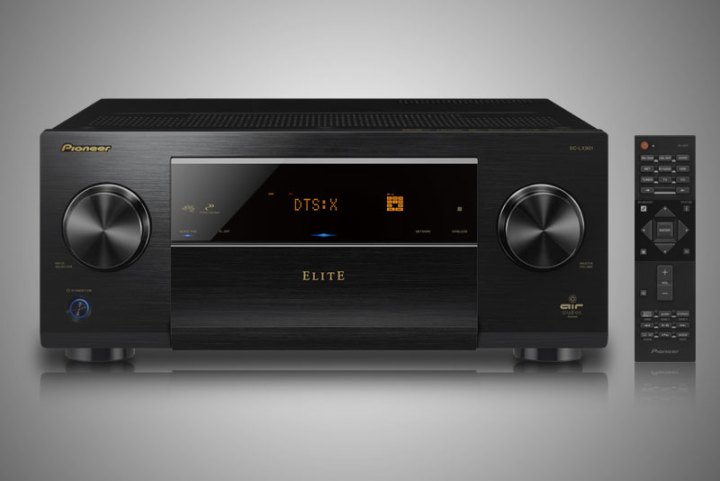
The SC-LX901 is the first 11.1-channel model from Pioneer. It’s powered by an 880-watt class D3 (Direct Energy HD) amplifier that the company says is capable of providing simultaneous output across every channel with no power loss. The receiver features ESS Sabre DACs (digital to analog converters), which are found in many higher-end audio and home theater products.
Unlike the two other new models announced, the SC-LX901 will feature multiroom audio via FireConnect. This won’t be available out of the box, but Pioneer plans to add the feature in a future firmware update. Optional FireConnect-compatible wireless speakers will be available in December. In the meantime, Google Cast is supported, as are both internet radio and streaming services like Spotify, Pandora, Tidal, and Deezer.
Like the other two models, the SX-LX901 features support for both Dolby Atmos and DTS:X 3D object-based surround sound. Each input features HDMI 2.0a and HDCP 2.2, allowing for 4K/60p/4:4:4 24-bit video passthrough, including support for HDR signals.
The SC-LX801 and SC-LX701 are 9.1-channel models and don’t feature wireless multiroom support, but otherwise match the features found on the SX-LX901. The SC-LX801 features a 770-watt amplifier, while the SX-LX701 features a 760-watt amplifier. Both also feature the multichannel simultaneous drive available on the flagship model.
High-resolution is supported across the three new receivers, with FLAC, WAV, AIFF, and Apple lossless file formats supported up to 192 kHz/24-bit, and DSD up to 11.2 MHz. Each features Bluetooth connectivity and dual-band Wi-Fi, complete with AirPlay support. The receivers feature Pioneer’s Precision Quartz File-based Audio (PQFA), which reduces jitter in files played via USB or over the network.
Each of these new receivers features MCACC (multichannel acoustic calibration) Pro, making setup easy, no matter where you’re setting them up. This uses a microphone to measure the room’s acoustics, then adjusts its built-in equalization and volume on a per-speaker basis to fit the system to your space.
All of these new receivers are shipping beginning this month. The SC-LX901 retails for $3,000, while the SC-LX801 sells for $2,000, and the SC-LX701 goes for $1,600. For more information on each of these models, see the Pioneer website.


